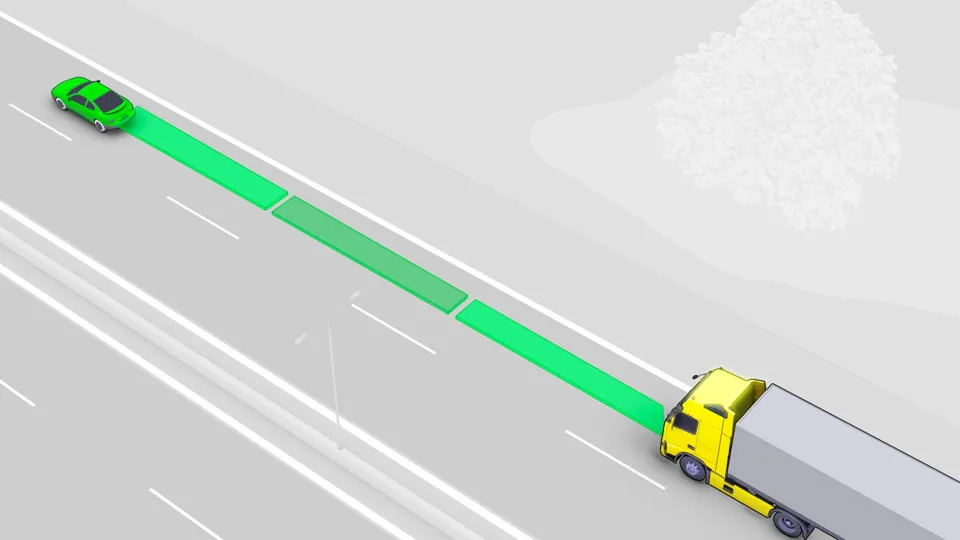Vehicle safety is a topic that is rarely out of the headlines, particularly with regard to larger goods vehicles and cycle safety in urban environments (see CLOCS report, page 4). But new legislation and technologies are gradually reducing the number of casualties on the UK’s roads, with even greater improvements expected in the coming years.
Accident rate and severity fall
The Great Britain Transport Statistics for the last full year in 2013, published in September 2014, is an overview of the transport industry, and one of the most keenly awaited subject areas is vehicle type and severity of road accidents.
The report shows a gradual decline in all severities from 2003-2013, with cars leading the way in 2013 at 185,769 incidents, vans at 12,686 and trucks at 6,524, but this disparity can easily be attributed to the overwhelming number of cars on British roads compared to vans and trucks.
A more accurate comparison, therefore, would be the number of vehicles involved in an incident divided by the number of vehicle miles covered; thus reaching a rate per miles covered. The average incident rate per billion vehicle miles was 824; for cars it was 774, vans 298 and trucks 416, indicating the fact that both vans and trucks were involved in significantly fewer accidents per miles covered than cars.
The accident rate for all three sectors (cars, vans and trucks) has dropped over the past 10 years by around 55-60%, but cyclists, both pedal and motor, haven’t experienced the same decline. The statistics show rates of 6,407 and 7,264 respectively, with motorcyclists dropping just 14%, and pedal cyclists actually increasing by 1%.
Little wonder the last few years have seen an increased focus on cyclists but, from a manufacturer’s perspective, safety design is divided into two main areas of focus – active and passive – and this has been at the heart of research and development for the past couple of decades.
Active safety
As both fleet buyers and engineers look to ‘spec’ a van or truck, one of the main areas of importance or purchasing criteria is often based, and should be based, on the in-built safety features of the prospective vehicle. It could be said that active safety systems are not as obvious as passive, since in many cases all the technology watching the vehicle is out of sight or under the bonnet.
Active safety features help prevent or mitigate road crashes as they are designed to either prevent a crash from occurring or, if it becomes inevitable, to reduce its severity. A typical van or truck list of features includes active safety examples such as electronic stability programme (ESP), electronic brakeforce distribution (EBD) and anti-lock braking system (ABS). They monitor the vehicle brakes and wheels for “abnormalities” to standard braking and cornering characteristics through a series of sensors in these areas and wait to step in to take corrective action.
They often do this by automatously reducing the vehicle’s speed, and then applying progressive independent braking to either return the vehicle to a stable condition, or stopping the vehicle within the requirements of the driver.
These traditional active safety systems have more recently been supplemented by a new generation such as forward collision warning or adaptive cruise control, lane departure warning and collision active steering.
Perhaps the ultimate safety system in this field to date was demonstrated when a driverless Freightliner Cascadia Evolution fitted with Highway Pilot technology featuring a front radar, stereo cameras plus Adaptive Cruise Control+, became street legal in the State of Nevada.
Passive safety
The main function of ‘passive’ safety features is to keep the driver and passengers protected within the vehicle.
The principal is derived from the design of Formula 1 vehicles which feature a safety cell allowing a degree of impact absorption to occur without compromising the cell itself. This is achieved by crumple zones helping to absorb and distribute crash forces before they reach the passenger and driver seats, while seatbelts, airbags and headrests help keep the driver and any passenger stationary.
Airbags have evolved from the simple system of 20 years ago and now feature progressive inflation, while advanced seatbelts moderate the amount of tension across a person’s body, helping to reduce seatbelt-related injuries. Headrests can include passive safety technology to reduce whiplash.
Body safety
One area where safety design has not progressed as rapidly is the body on the back of the truck or light commercial vehicle chassis cab. Here, the focus revolves around the mandatory requirements for rear and side under-run bumpers.
For urban distribution vehicles, cyclist and pedestrian safety is an important consideration so a proximity warning system, coupled with mirrors, on-board cameras and clear signage, has a large part to play.

















Login to comment
Comments
No comments have been made yet.